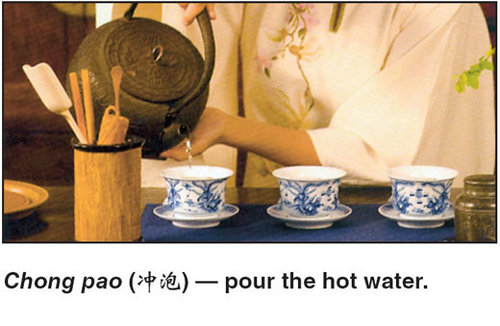
Jiang drinks tea every day. It's not addiction, but a way of life. She can spend 10 or 15 minutes to calm down and brew some tea.
"Having the opportunity to stop for a moment in life is very nice, and your own pace slows as well," she says.
Originally, tea was used as a medicinal herb and cooking ingredient. The art of tea making started in the Tang Dynasty (AD 618-907) and people considered it a way to cultivate the mind and spirit.
From noblemen to monks, scholars to ordinary people, almost everyone would drink tea and it became very common, certainly appreciated because it improves alertness. Scholars and writers started to combine preparing and savoring tea with writing and poetry.

Tang Dynasty writer Lu Yu (AD 733-804) is known as "Sage of Tea" for his contribution to Chinese tea culture. He wrote "The Classic of Tea," or "Cha Jing," the very first monograph on tea in the world, including chapters on its origin, history, implements, methods of preparation and other subjects.
In the Song dynasty (960-1279), tea was one of the most important export both by land and sea, and Chinese teas found their way to Arabia and even Africa.
Japanese monk My¨-an Eisai came to China in the Southern Song Dynasty (1127-1279) to study Zen Buddhism and returned home in 1193, taking tea from China to Japan. It was the beginning of tea cultivation and tea culture in Japan.
The most important part of cha dao is not all about expensive equipment and tea leaves. It varies with different people.
Though Chinese people have many standards and forms of etiquette for drinking tea, it is not religious, but a necessary part of life.
"The most important thing of cha dao is inspiration to the heart," says Shen Jiong, founder of Ji Xiang Cao Tang (Auspicious Thatched Cottage), a tea house on Yuyuan Road.
